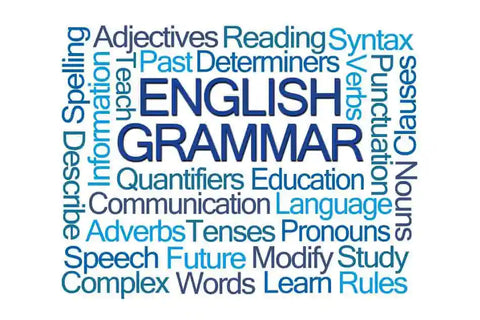Three Tricky English Verbs and How To Use Them Correctly
English presents many challenges for academic and scientific authors who aim to communicate with precision and sophistication. This is obviously the case for scholars who are not native speakers of English, but there are certain English words that are very tricky indeed to use correctly, even for native speakers of the language. The three verbs ‘to lie’ (to tell a falsehood), ‘to lie’ (to recline) and ‘to lay’ (to set something or someone down) are among these words, with errors in their use common in both speech and writing of all kinds – even the most accomplished academic and scientific writing, in which such mistakes should always be avoided.
The verb ‘to lie’ with the meaning ‘to tell a falsehood’ is an intransitive verb, so it does not require a direct object. Conjugating it is straightforward, with all forms of the simple present tense using ‘lie,’ except the third person singular, which takes the form ‘lies’: ‘I lie’ and ‘they lie,’ but ‘he lies.’ The simple past tense is also uncomplicated, with all forms being ‘lied’: “I lied,’ ‘he lied,’ ‘we lied’ and so on. The past participle is the same as the simple past, and ‘lying’ is the present participle, so with an auxiliary verb the correct forms are ‘he had lied’ and ‘he was lying.’ The most common error associated with this verb is the use of its past tense or past participle ‘lied’ when the past tense or past participle of the other verb ‘to lie’ (meaning ‘to recline’) is actually intended.
The verb ‘to lie’ with the meaning ‘to recline’ is also an intransitive verb, so it does not take a direct object either, but some of its forms differ from the verb discussed above. The simple present tense is straightforward and exactly the same as the forms of the other ‘to lie’: ‘I lie down’ and ‘they lie down,’ but ‘she lies down.’ However, the simple past tense is a little more complicated because the base of the verb changes, with ‘lay’ being the correct form for all voices: ‘I lay down,’ ‘she lay down,’ ‘they lay down’ and so on. The present participle is ‘lying,’ so ‘she is lying down’ is right, but the past participle is ‘lain.’ This means that ‘he has lain down,’ meaning ‘he has reclined,’ is the correct form when using an auxiliary verb. Please note that ‘he has lied down,’ though a relatively common error, is incorrect, and so is ‘he lied down’ for the simple past, so both of those constructions should be strictly avoided in scholarly prose.
The verb ‘to lay’ with the meaning ‘to set something or someone down’ is usually a transitive verb, so it takes a direct object – namely, whatever is set down. The simple present tense is ‘lay’ (exactly and dangerously like the past tense of the verb ‘to lie’ meaning ‘to recline’), except in the third person singular, which uses ‘lays’: ‘I lay the book on the desk’ and ‘they lay the book on the desk,’ but ‘he lays the book on the desk.’ Both the simple past tense and the past participle take the form ‘laid’: ‘I laid the book on the desk,’ ‘they laid the book on the desk’ and ‘she has laid the book on the desk.’ The present participle is ‘laying,’ so ‘I am laying the book on the desk’ is correct. Remember that both ‘to lay’ and ‘to lie’ (meaning ‘to recline’) have many different applications and subtleties of meaning in English, so dictionary entries for them tend to be very long indeed, and careful thought is always required when using either of these verbs.
Why Our Editing and Proofreading Services?
At Proof-Reading-Service.com we offer the highest quality journal article editing, dissertation proofreading and online proofreading services via our large and extremely dedicated team of academic and scientific professionals. All of our proofreaders are native speakers of English who have earned their own postgraduate degrees, and their areas of specialisation cover such a wide range of disciplines that we are able to help our international clientele with research editing to improve and perfect all kinds of academic manuscripts for successful publication. Many of the carefully trained members of our manuscript editing and proofreading team work predominantly on articles intended for publication in scholarly journals, applying painstaking journal editing standards to ensure that the references and formatting used in each paper are in conformity with the journal’s instructions for authors and to correct any grammar, spelling, punctuation or simple typing errors. In this way, we enable our clients to report their research in the clear and accurate ways required to impress acquisitions proofreaders and achieve publication.
Our scientific proofreading services for the authors of a wide variety of scientific journal papers are especially popular, but we also offer manuscript proofreading services and have the experience and expertise to proofread and edit manuscripts in all scholarly disciplines, as well as beyond them. We have team members who specialise in medical proofreading services, and some of our experts dedicate their time exclusively to dissertation proofreading and manuscript proofreading, offering academics the opportunity to improve their use of formatting and language through the most exacting PhD thesis editing and journal article proofreading practices. Whether you are preparing a conference paper for presentation, polishing a progress report to share with colleagues, or facing the daunting task of editing and perfecting any kind of scholarly document for publication, a qualified member of our professional team can provide invaluable assistance and give you greater confidence in your written work.
If you are in the process of preparing an article for an academic or scientific journal, or planning one for the near future, you may well be interested in a new book, Guide to Journal Publication, which is available on our Tips and Advice on Publishing Research in Journals website.








